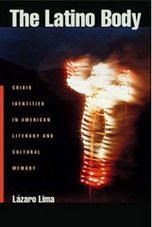Lázaro Trista, a Guatemalan immigrant, was beaten to death by three men in Plainfield, N.J., this past week for simply being a Latino immigrant, and the mainstream media doesn't seem interested in reporting this case. The local Latino press reports that Tista had purchased a plane ticket and planned to return to Guatemala for good this month. He missed his family and wanted to see his youngest son, whom he had never met.
Under what conditions does a body, any body, cease to signify its own humanity by virtue of its historical and political identity in a country that grants "minutemen" the impunity associated with justice through the category of "law"? How can a nation construe the very being of any of its inhabitants as an expendable and disposable commodity? My heart goes out to his family.
Guatemala's
Prensa Libre covered it this afternoon.
Article selections below are from
Courier News:Police Chief Edward Santiago said the killing happened within a half-hour before police arrived at the scene Nov. 4. He said the three men singled out Tista to rob him.
"Based on the statements we received, the bias identifiers were established from their statements that they were targeting Hispanics," said Police Chief Edward Santiago.
Tista was a Guatemalan immigrant who worked as a landscaper. He was preparing to fly Nov. 29 to Guatemala, where his wife, mother and six of his children live. Tista has a 20-year-old son who lives in New Jersey.
Local activist Flor Gonzales, of the Latin American Coalition, and Elaine O'Neal, the victims and witness advocate at the Union County Prosecutor's Office, worked with Tista's family and were able to raise enough money so that Tista's remains can be flown home to Guatemala on Monday, Santiago said.
Tista has been given a wake at the Salvation Army in Plainfield, and he will have a funeral in Guatemala, Santiago said.







